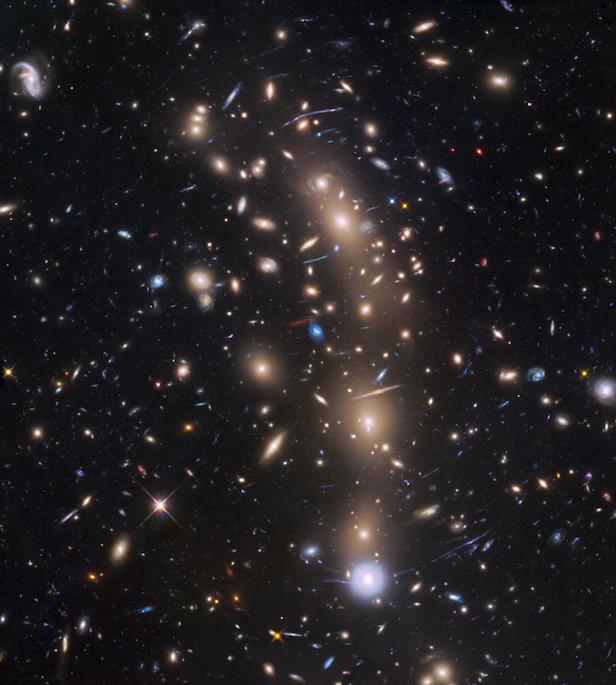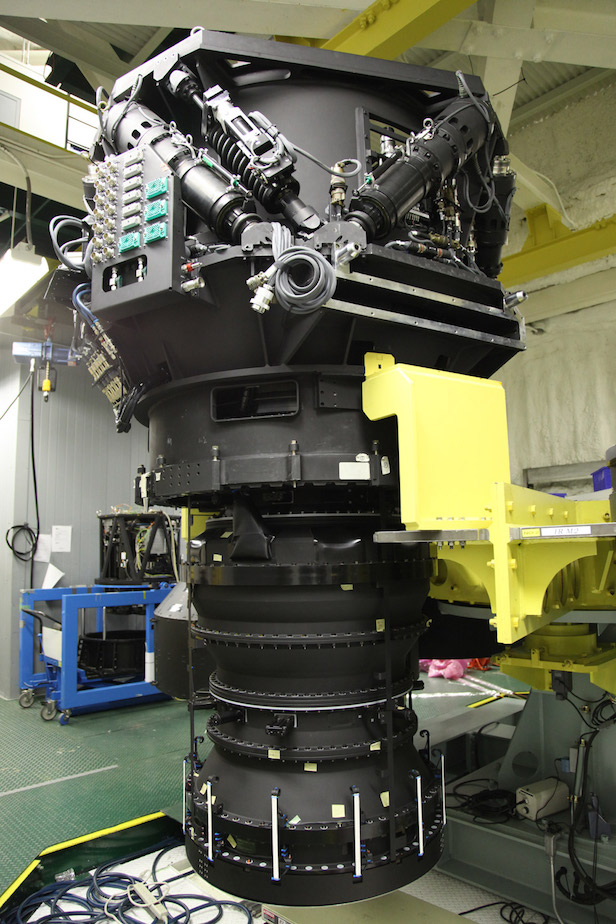Watching distant galaxies has revealed the elusive nature of dark energy
Using Einstein’s general theory of relativity and highly sensitive equipment, astronomers have constrained the role of dark energy in the early universe

Einstein’s theory predicted that massive objects, such as galaxy clusters, can bend the light of background galaxies and focus it onto Earth, a phenomenon known as “gravitational lensing”. Image credit: NASA/ESA/Pontificia Universidad Católica de Chile
Einstein’s general theory of relativity has helped an international team of researchers measure the lumpiness of dark matter in our universe today by analysing images of 10 million distant galaxies, and further use it to understand dark energy.
Dark matter is responsible for the formation of galaxies in the universe, while dark energy is responsible for the acceleration in the universe’s ongoing expansion. Together dark matter and dark energy make up 95 percent of our universe, but why this number is so big remains a mystery. To explain the behaviour and the fate of the universe, scientists must find out what dark matter and dark energy are.
Studies to measure the amount of cosmic structure have been carried out in the past, especially when the universe was very young, such as the European Space Agency’s (ESA) Planck satellite. Dark energy can affect the growth rate of these structures at a later time, closer to today. Scientists are just starting to measure the growth of these structures by studying dark matter in the later universe and thus using it to learn about dark energy.
“Fluctuations measured by Planck are like a precise arrow shot from the early universe, and we have measured where the arrow landed with Subaru Hyper Suprime-Cam,” says Inter-University Center for Astronomy & Astrophysics Associate Professor Surhud More.
The Hyper Suprime-Cam Survey, which uses the 820 megapixel Hyper Suprime-Cam camera attached to the 8.2-metre (27-foot) Subaru telescope at the summit of Mauna Kea, in Hawai’i, allowed researchers to study galaxies billions of light years away. These galaxies existed billions of years ago but their light only reached Earth today.
Albert Einstein predicted gravitational lensing in his theory of general relativity, where gravity can bend the path of light, making far away galaxies appear distorted to observers on Earth.

The Hyper Suprime-Cam weighs three tonnes and is three metres (nine feet) high. Image credit: NAOJ
Since 2014, researchers from Japan, Taiwan, and the United States, led by Kavli Institute for the Physics and Mathematics of the Universe (Kavli IPMU) Project Assistant Professor Chiaki Hikage, studied these minute distortions caused by gravitational lensing to reconstruct where matter is distributed in the universe. Now the team can see how fluctuations of dark matter across the sky have changed over billions of years, and how dark energy has influenced this growth of structure.
“I had a long-cherished hope to undertake high precision cosmology research such as that enabled by WMAP and Planck. I am very excited to share the measurements of the growth of dark matter structures in the universe with great accuracy using Subaru HSC data,” says Hikage.
However, Hikage and his team knew their excitement could potentially bias their results, especially if they looked to confirm results from previous studies during their analysis. To ensure the results were sound, they performed a blind analysis, a technique well known in medical trials where no one knows which patients have been given a new treatment. Two fake data catalogs were created, and the true identity of each catalog was locked away in a box. Following an unveiling event on 26 June 2018, for the first time researchers found their analysis had revealed the Hyper Suprime-Cam Survey was indeed consistent with past gravitational lensing studies, but their result suggested cosmic structures might be evolving a tad bit slower in the universe today than that predicted by the Planck satellite in the concordance cosmological model.
This could be a statistical fluctuation due to a small data set, or it could indicate a breakdown in the standard model of the universe.
Luckily, there is more data for the team to analyse in the future. This result uses only 11 per cent of the full survey, because the Hyper Suprime-Cam is still taking images, and is scheduled to finish around 2020.
“This is just a first step, and the completed data of Hyper Suprime-Cam survey promises to advance our understanding of dark matter and dark energy,” says Kavli IPMU Principal Investigator Masahiro Takada.
Keep up to date with the latest news in All About Space – available every month for just £4.99. Alternatively you can subscribe here for a fraction of the price!




